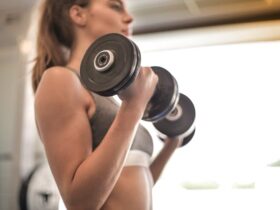Entering menopause marks a significant transition in a woman’s life, accompanied by a variety of physical, emotional, and hormonal changes. These changes can have a profound impact on overall health and wellbeing, making it crucial for women to adapt their lifestyle, including their exercise routine, to address the specific needs and challenges associated with this phase. In this comprehensive guide, we delve into the dos and don’ts of exercising after menopause, providing insights and recommendations to help women embrace a healthy and active lifestyle during this transformative stage of life.
Understanding Menopause And Its Impact on Exercise
Menopause is a natural biological process that marks the end of a woman’s reproductive years. It typically occurs in the late 40s to early 50s and is characterized by a decline in estrogen and progesterone levels, leading to various physical and physiological changes. These changes can include fluctuations in mood, changes in metabolism, alterations in body composition, and a decline in bone density. Understanding the impact of menopause on exercise is essential for developing a tailored workout plan that addresses specific needs and concerns.
Embracing Cardiovascular Exercise
Cardiovascular exercise, also known as aerobic exercise, is vital for maintaining heart health, managing weight, and promoting overall well-being, especially after menopause. Engaging in regular aerobic activities such as brisk walking, swimming, cycling, or dancing can help women reduce the risk of heart disease, stroke, and other cardiovascular disorders. Additionally, aerobic exercise has been shown to improve mood, alleviate symptoms of anxiety and depression, and boost energy levels, providing women with a sense of vitality and empowerment during this transitional phase of life.
Prioritizing Strength Training
Strength training becomes increasingly important after menopause to combat age-related muscle loss, known as sarcopenia, and maintain bone density. Incorporating exercises that target major muscle groups, such as squats, lunges, push-ups, and resistance band exercises, can help women preserve strength, improve posture, and enhance overall mobility and independence. Furthermore, strength training has been shown to increase metabolism, improve insulin sensitivity, and reduce the risk of falls and fractures, making it an essential component of a well-rounded exercise routine for menopausal women.
Listening To Your Body
One of the most important dos of exercising after menopause is listening to your body’s signals and responding accordingly. Pay attention to how you feel during and after exercise, and adjust your routine based on your individual needs and limitations. If you experience discomfort, pain, or unusual symptoms, it’s essential to consult with a healthcare professional or fitness instructor to ensure that your exercise plan is safe and appropriate for your health status and fitness level. By tuning into your body’s feedback, you can optimize the benefits of exercise while minimizing the risk of injury or overexertion.
Hydration And Nutrition
Proper hydration and nutrition are fundamental aspects of any exercise regimen, particularly during and after menopause. Staying hydrated by drinking an adequate amount of water before, during, and after exercise is essential for regulating body temperature, lubricating joints, and supporting cellular function. Additionally, focusing on a balanced diet rich in nutrient-dense foods such as fruits, vegetables, whole grains, lean proteins, and healthy fats can provide the essential vitamins, minerals, and antioxidants needed to support bone health, muscle function, and overall vitality during menopause.
Flexibility And Balance Exercises
Menopause can bring about changes in flexibility, joint mobility, and balance, increasing the risk of falls and injuries. Therefore, integrating flexibility and balance exercises into a workout regimen is crucial for maintaining mobility, preventing falls, and promoting overall safety and well-being. Activities such as yoga, tai chi, Pilates, and stretching routines can help improve flexibility, enhance joint range of motion, and increase body awareness and coordination, especially if you opt for practical hot mat pilates exercises that will help you reduce the risk of injury and support long-term functional independence.
Managing Stress And Rest
Menopause can be accompanied by increased stress levels, mood swings, and disruptions in sleep patterns, which can negatively impact overall health and wellbeing. Therefore, incorporating stress-reducing activities such as meditation, deep breathing exercises, progressive muscle relaxation, or leisurely walks into your daily routine can help promote relaxation, reduce anxiety, and improve sleep quality. Adequate rest and recovery are also essential for allowing the body to repair and rebuild muscle tissue, replenish energy stores, and support optimal immune function, ultimately enhancing the benefits of exercise and promoting overall health and vitality during menopause.

Seeking Professional Guidance
While embracing an active lifestyle after menopause is beneficial for overall health and well-being, it’s essential to seek professional guidance from qualified fitness instructors, personal trainers, or healthcare providers. These professionals can help assess your individual needs, develop a personalized exercise plan tailored to your goals and abilities, and provide guidance on proper exercise technique, progression, and safety precautions.
Navigating exercise after menopause requires a comprehensive approach that addresses the unique physical, emotional, and hormonal changes associated with this life stage. Remember that exercise is not only about physical fitness but also about enhancing overall health, wellbeing, and quality of life as you navigate this transformative phase of life.
Author Bio
Diana Smith is a full time mom of two beautiful girls interested in business and marketing related topics.
is a full time mom of two beautiful girls interested in business and marketing related topics.
In her free time she enjoys exercising and preparing healthy meals for her family.
Source link: https://artofhealthyliving.com/navigating-exercise-after-menopause-dos-and-donts/?utm_source=rss&utm_medium=rss&utm_campaign=navigating-exercise-after-menopause-dos-and-donts by Diana Smith at artofhealthyliving.com








